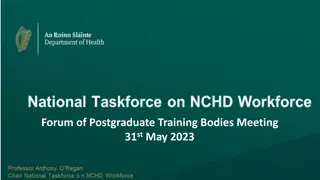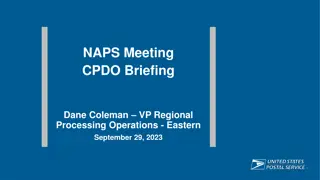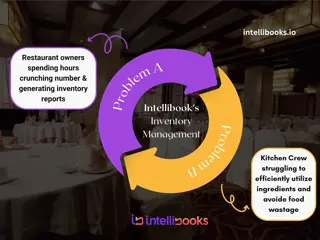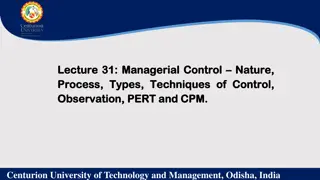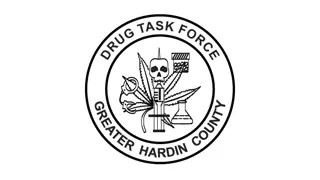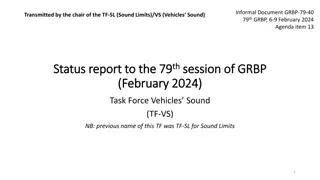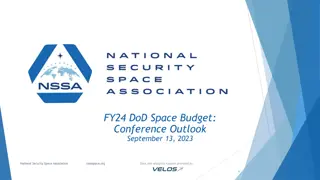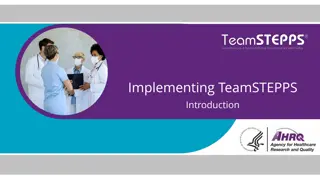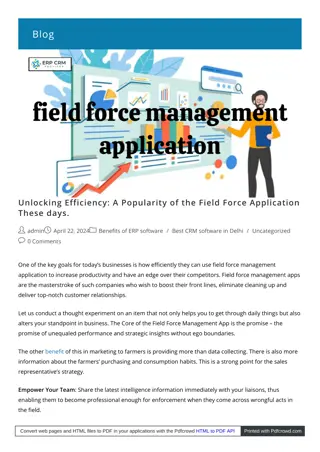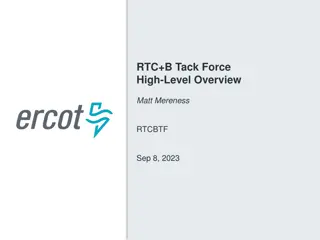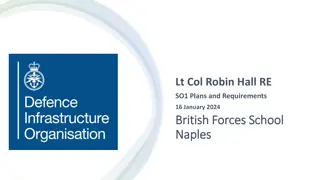Workforce Management Solution Implementation in the Jamaica Constabulary Force
The Jamaica Constabulary Force is implementing a Workforce Management Solution to ensure proper compensation for hours worked beyond 40 weekly. Key principles, definitions, and procedures play a critical role in managing workforce activities, including duty forecasting, rostering, and overtime authorization. Members are compensated for scheduled and unscheduled overtime based on defined parameters and processes within the Force.
- Workforce Management
- Jamaica Constabulary Force
- Overtime Compensation
- Workforce Procedures
- Duty Forecasting
Workforce Management Solution Implementation in the Jamaica Constabulary Force
PowerPoint presentation about 'Workforce Management Solution Implementation in the Jamaica Constabulary Force'. This presentation describes the topic on The Jamaica Constabulary Force is implementing a Workforce Management Solution to ensure proper compensation for hours worked beyond 40 weekly. Key principles, definitions, and procedures play a critical role in managing workforce activities, including duty forecasting, rostering, and overtime authorization. Members are compensated for scheduled and unscheduled overtime based on defined parameters and processes within the Force.. Download this presentation absolutely free.
Presentation Transcript
Guiding Principles The implementation of a Workforce Management Solution (WMS) within the Jamaica Constabulary Force (JCF) is to ensure that members are compensated for hours worked in excess of forty (40) hours weekly. Where exigency of service requires, members will be required to work beyond their forty (40) hours weekly to continue policing activities.
guiding principles The Standing Operating Procedures on Workforce Management within the JCF is to be read in conjunction with the: 1. Constabulary Force Act 2. Book of Rules for the guidance and general direction of the JCF 3. JCF Standing Orders 4. Applicable Policies and Force Orders
Key Definitions Workforce Management Solution (WMS) - an automated system used to schedule duties and record hours worked by members to facilitate processing of overtime payments. Work Week - a period of seven (7) days commencing at 8:00 am on a Sunday and ending at 7:59 am on the following Sunday. Duty Forecast - a projection of four (4) Work Weeks comprising; names of personnel, type and duration of duties (including scheduled overtime) members are required to work. Duty Roster - a Duty Forecast which has been authorized by the Approving Officer.
Key Definitions Duty Sub-Officer - a Sub-Officer tasked with the responsibility to prepare a Duty Forecast. Verifying Officer a Station/Unit Commander tasked with the responsibility to certify a Duty Forecast prepared by the Duty Sub-Officer. Approving Officer - a Divisional Commander or a designated Gazetted Officer tasked with the responsibility to Authorize a Duty Forecast and all Overtime within his/her Division or Formation.
Key Definitions Extra Time any time or period, in excess of thirty (30) minutes worked each day, beyond forty (40) hours within a given Work Week. Overtime any Extra Time that has been authorized by an Approving Officer. Scheduled Overtime - any Extra Time that has been authorized by an Approving Officer and forms part of the Duty Roster. Unscheduled Overtime any Extra Time that was not on the Duty Roster but has been subsequently authorized by the Approving Officer.
Key Definitions Shift Related Overtime - occurs when a scheduled shift has ended, and exigency requires that the member continues working Non-Shift Related Overtime - when a member who is off duty takes law enforcement action in an emergency Extra-Time Ticket - a prescribed application form or an interface on the WMS that members use to apply for Unscheduled Overtime Time Sheet actual authorized hours recorded by the WMS (scheduled and unscheduled) which is utilized to calculate Overtime payments.
Key Definitions Biometric Device - an authentication device that is used to verify and recognize the identity of a member based on physical characteristics. These characteristics include fingerprint and facial images. Mobile App (or Mobile Application) - a software application developed specifically for use on small, wireless computing devices, such as smartphones and tablets, rather than desktop or laptop computers Member Portal - a web page designed for members of the JCF to access important information including Duty Rosters and Time Sheets. Call In to communicate with a person by telephone
Why a WMS? A modern Workforce Management Solution (WMS) is important to ensure that: All hours worked by members beyond forty (40) hours are essential, recorded and approved for overtime payments; Verifying Officers and Duty Sub-Officers are provided with real time information to guide duty forecasting under regular and extra-ordinary circumstances; Members at their own convenience can view their duty roster, review actual hours worked and track overtime; All duties are allocated for optimal performance in a manner which is fair and transparent.
Standard operating procedures The Standard Operating Procedures for Workforce Management within the JCF are outlined under four (4) broad areas: 1. Duty Scheduling 2. Recording of Time for Scheduled Duty 3. Accounting for Unscheduled Overtime 4. Submission of Time Sheets for Payment
Standard operating procedures 1. Duty Scheduling a. The Duty Sub-Officer shall consult with his/her Station/Unit Commander and determine the different tasks, duties and responsibilities to be undertaken for an ensuing month in keeping with the Station/Unit plan. b. The Duty Sub-Officer shall use the WMS to prepare the Duty Forecast reflecting all duties and hours (including Scheduled Overtime) and submit to the Verifying Officer on or before the 3rdFriday of each month;
Standard operating procedures Duty Scheduling cont d c. recommendation(s) or otherwise to the Approving Officer on or before the 3rdSaturday of each month; d. The Approving Officer reviews the monthly Duty Forecast and makes any adjustments where required before Authorizing on the WMS by the 4thTuesday of each month. The authorized Duty Forecast now becomes the Duty Roster. The Verifying Officer shall examine the monthly Duty Forecast and make
Standard operating procedures Duty Scheduling cont d Note: Where the WMS is not available, the Duty Sub-Officer and Verifying Officer must respectively prepare and certify a typed or written Duty Forecast (Appendix A) and submit to the Approving Officer.
Standard operating procedures 2. Recording of Time for Scheduled Duty a. Members are required to record their time of commencement for each duty using one of the following approved Clock In methods: i. Biometric Device ii. Mobile App iii. Member Portal (JCF Website) iv. Call-In b. The WMS will automatically Clock Out members once the scheduled duty has ended.
Standard operating procedures Recording of Time for Scheduled Duty (cont d) Note: The method of Clock In will be defined by the type of duty. If none of the approved Clock In methods are available, the Sub-Officer on duty shall extract commencement times from the Station Diary for submission to the Duty Sub- Officer at the Divisional HQ within 24 hours. If a member is authorized to end his/her duty before the shift has ended, the member shall Clock Out and justification noted on the WMS by the Station/Unit Commander.
Standard operating procedures 3. Accounting for Unscheduled Overtime a. Members may be required to take appropriate law enforcement action outside of the Duty Roster due to exigency. Consequently, there are two (2) types of Unscheduled Overtime payable: i. ii. Shift Related Overtime Non-Shift Related Overtime
Standard operating procedures Accounting for Unscheduled Overtime (cont d) i. exigency, remains on duty beyond 30 minutes, an Extra-Time Ticket may be created by the member or a Verifying Officer and submitted to the Approving Officer. Shift Related Overtime - where the member s scheduled duty has ended and due to
Standard operating procedures Accounting for Unscheduled Overtime (cont d) ii. exigency, the member may: inform the Police Emergency Communication Centre (PECC), Verifying Officer or nearest Police Station immediately or as soon as is practicable, giving the nature, time, location and duration of the incident; complete and submit an Extra-Time Ticket to his/her Verifying Officer for certification within 24 hours of the incident. Non-Shift Related Overtime - where a member is off scheduled duty and responds to an
Standard operating procedures Accounting for Unscheduled Overtime (cont d) Note: Where the WMS is not accessible to the member, the Verifying Officer may complete or cause to be completed an Extra-Time Ticket for the member within 24 hours of the overtime duty. Upon completing an Extra-Time Ticket, the Verifying Officer shall submit with appropriate justification for authorization by an Approving Officer.
Standard operating procedures 4. Submission of Time Sheets for Payment a. The Duty Sub-Officer and Verifying Officer shall monitor Time Sheets generated by the WMS after a member Clocks In for scheduled Duty. b. The Time Sheet shall be reviewed and certified for accuracy within 48 hours following each work week before it is submitted to the Approving Officer for authorization on the WMS for payment. c. The authorized Time Sheet is then processed by the JCF s Finance Branch for payment.
Standard operating procedures Submission of Time Sheets for Payment (cont d) Note: Time Sheets that are not authorized by established payroll deadlines will be processed for payments in the following month.
approved forms 1. Duty Forecast 2. Extra-Time Ticket 3. Time Sheet
Member portal https://portal.jcf.gov.jm




